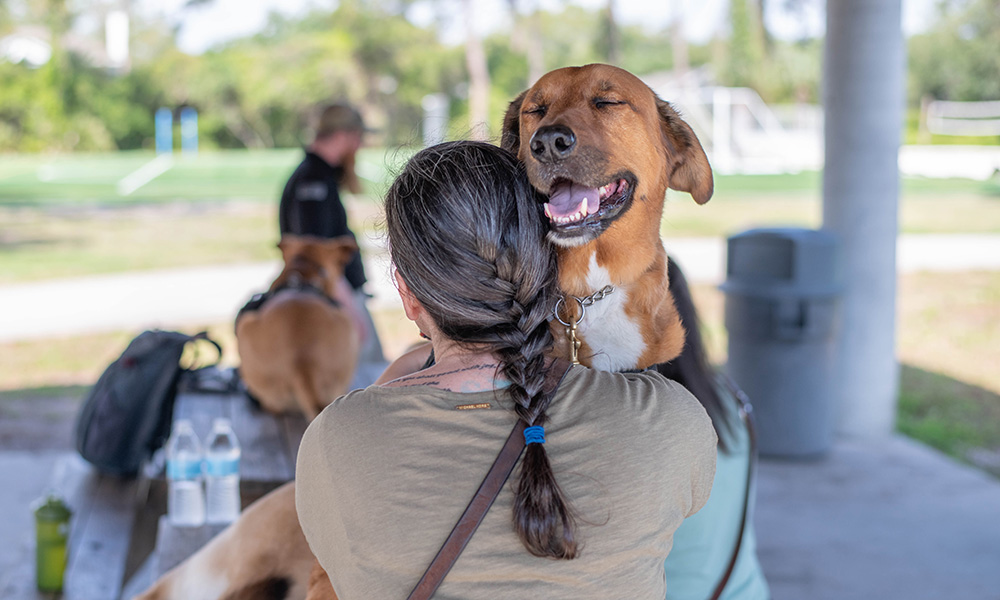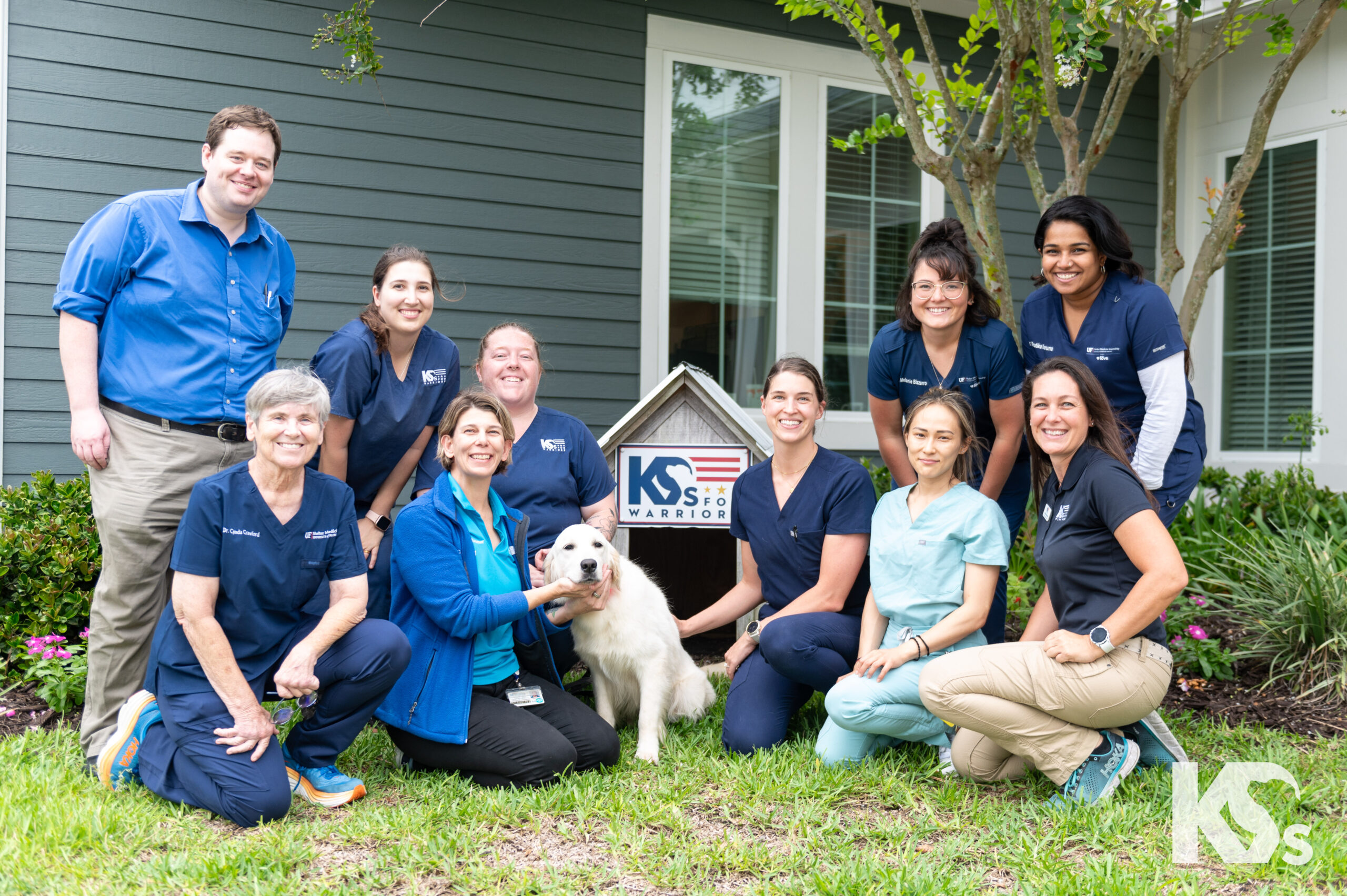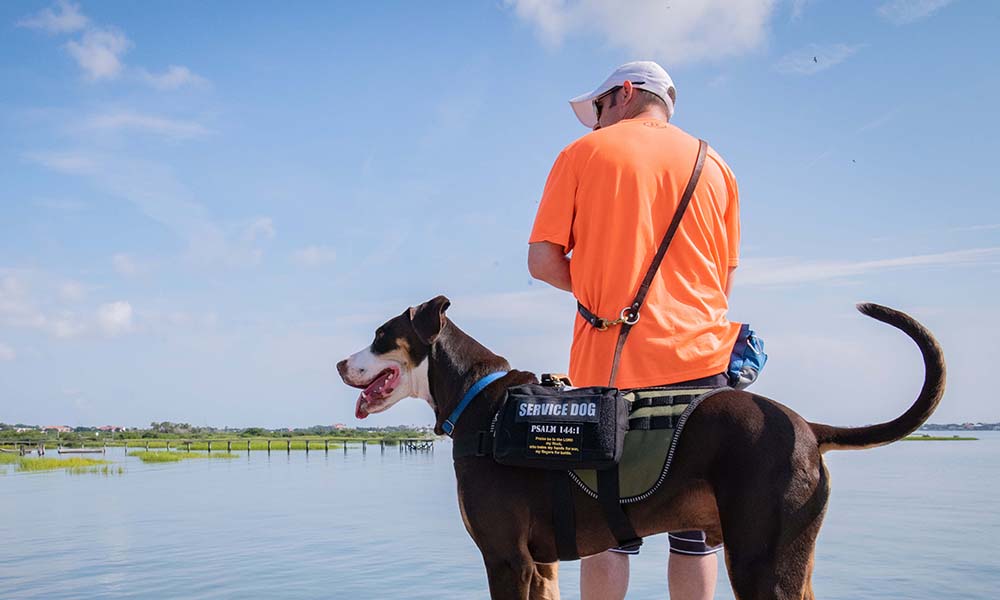Traumatic Brain Injuries (TBIs) often have persistent and life-long impacts and hundreds of thousands of our service men and women and military personnel currently suffer from the effects of TBIs. Throughout Operation Iraqi Freedom and Operation Enduring Freedom we saw a steep climb in the number of both open and closed head injuries sustained during service with many more servicemembers surviving despite these injuries than in previous wars.
TBIs manifest on a ‘spectrum’ of severity. They range from mild TBIs, also referred to as concussions, to severe TBIs that may leave veterans struggling to speak and walk and cause seizures. Even the most mild TBIs can have long-term consequences such as sleep disturbances; emotional and behavioral changes; difficulty with attention, focus, logic and reasoning, and decision making; mood disorders; cognitive disfunction; memory impairment; post-concussive syndrome, including headaches; tinnitus; and nerve damage; so, it’s important that all those who are at risk are screened for early intervention and are regularly seen by their healthcare team even after any acute physical injury is no longer obvious.
Potential treatment and prevention of future TBIs is improved as we develop our understanding of their causes. What is it about the wars in Iraq and Afghanistan that has contributed to the rise in brain injuries in our military members? What can we learn from this to protect our future military personnel?
Though many cases of TBI from these wars tend to be associated with those who have survived blunt trauma caused by IEDs (Improvised Explosive Devices), mortars, or land mines, we now know that an additional category of TBIs are caused directly by the blast wave of IEDs, Blast-induced Traumatic Brain Injury (b-TBI).
Traumatic Brain Injuries and Blasts
Vassilis Koliatsos, M.D., Professor of Pathology, Neurology, Psychiatry, and Behavioral Sciences at the Johns Hopkins University School of Medicine published, in Acta Neuropathologica Communications, the findings of a study that shows evidence as to why some veterans who are near but do not observably suffer blunt trauma caused by an explosion can become disabled by the blast event and suffer in ways not totally explained by PTSD.
During WWI troops began experiencing a set of symptoms commonly called “Shell Shock” because the condition was often seen as a result of a man having been in the trenches and in close proximity of a shell’s detonation, without a visible physical trauma. The condition usually included memory lapses, slurred speech, a distant consciousness, and physical symptoms such as abnormal gait and muscle movement. With no proof to link the explosion to the men’s physical symptoms and in consideration of its manifestation in some other men who had not been very near an explosion, this phenomena was largely deemed to be a psychological one.
While combat stress can cause the mental and emotional symptoms experienced by those with this condition and they are among those identified as Battle Fatigue in WWII and Post Traumatic Stress Disorder (PTSD) beginning in the Vietnam War, we have come to understand that the physical symptoms of this condition such as movement problems can also be explained by brain changes, and that an injury to the brain that would cause all of these symptoms – mental, physical, and emotional – can occur as a result of a closed head injury even when there has not been a blunt trauma. However, until this study, we had no imagery that proved that the blast from an explosion itself could cause such an injury to the brain.
Dr. Koliatsos identified physical evidence, a “signature” injury to the brain that occurs when the blast wave from an explosion directly damages the brain. He found that these b-TBIs cause tiny lesions or wounds that aren’t easily detected on most imaging equipment.
These lesions show up in a distinctive honeycomb pattern that makes it easy to differentiate from other concussions or brain damage caused by, for example, drug abuse or overdose. These findings validate the idea that veterans with TBI or blast-related injuries who also suffer from PTSD could have a physical, neurological basis to their symptoms, as sometimes the effects of TBI and PTSD overlap. But how exactly are these legions or tears made? Scientific researchers do not yet agree.
Blast Waves and Injury
A blast wave is a pulse of highly compressed air generated by a high order explosive that expands outward from the site of an explosion – faster than the speed of sound. A blast wave feels similar to a pulsing of hurricane force winds or the unstoppable force of an ocean. Those in its reach are at its mercy until it passes and, with close proximity or insufficient protection, may be thrown into or hit by whatever is near them; a wall, the window of the vehicle they are sitting in, or even their comrades.
However, it is not the force of smacking into another object that causes the newly evidenced damage to their brains – it is the effect of blast wave itself on the brain. These injuries, alone, leave nothing external bloodied or bruised and, without screening, they can go unrecognized; the symptoms can easily be, as they historically have been, dismissed as psychological. Commonly overlooked, the effects often go untreated.
What can’t be seen with the naked eye is the actually mechanism of damage that causes b-TBI. Scientists tend to accept that the b-TBI impacts the connections that deliver signals in the brain; but, they have yet to agree on how those changes to the connections occur. Some studies indicate that the blast wave itself makes the changes as it goes through the brain.
Like barotrauma that can effect the lungs, auditory organs, eye, and gastrointestinal tract, the changes can be subtle and can have a delayed presentation. Others reportedly show that the blast wave causes movement of the brain within the skull that is different from the movement caused by blunt trauma or whiplash. These researchers explain that the soft contours of the brain hit, with dangerous force, the hard wall of the skull and the brain is thereby compressed in two important areas: the frontal lobe and the temporal lobe.
Theoretically, because these two lobes of the brain are near the front of the head, they are the greatest distance from the stabilizing force of the neck and shoulders. This creates more torque, sending the front of the brain moving, and sliding into, the sides of the skull.
Complicating the presentation of b-TBI are the other types of injuries that may also occur from the same IED explosion. High order explosions can also cause secondary injury where something is propelled into a person; tertiary injury where a person is propelled into something else, or, for example, a skull is fractured and injures the brain; and quaternary injury from, for example, burns or toxic vapors.
The Future of Detecting Blast-Related TBI
All veterans are screened for TBI when they have been a part of an event with known high-level risk. This usually happens when they first enter the VA system. While knowing that proximity to a blast capable of producing a blast wave is important for identifying high-risk patients, we still hope for a method that would definitely show TBI right after impact. The signature honeycomb pattern of this injury could help us develop it.
Proteins are being studied as biomarkers that would allow combat medics to take a simple prick of the injured person’s finger and know whether the proteins associated with TBI were present in that soldier’s body (National Institute of Health). This early and definitive detection could revolutionize care for military brain injuries. It would allow the opportunity for immediate intervention and provide a much better chance of some healing than is otherwise available.
Though categorizing each type of brain injury may seem unnecessarily myopic – especially where one veteran has multiple injuries or the deficits the injuries cause are great – for those having to fight for the care and support they or their loved ones deserve, having hard evidence of their injuries is huge.
Dr. Koliatsos’s findings, like other research done on these conditions since at least WWI, have not yet led to a cure and have not stopped their occurrence; but, perhaps they can yield the next best thing to new interventions: hope for the future. For those struggling with the frustrations and depression that can come from any degree of TBI or even with suicidal ideation as many of our K9s For Warriors’ applicants do, a reason to hope that help is on its way can bridge the gap they have to continually cross in order to keep hanging on.







